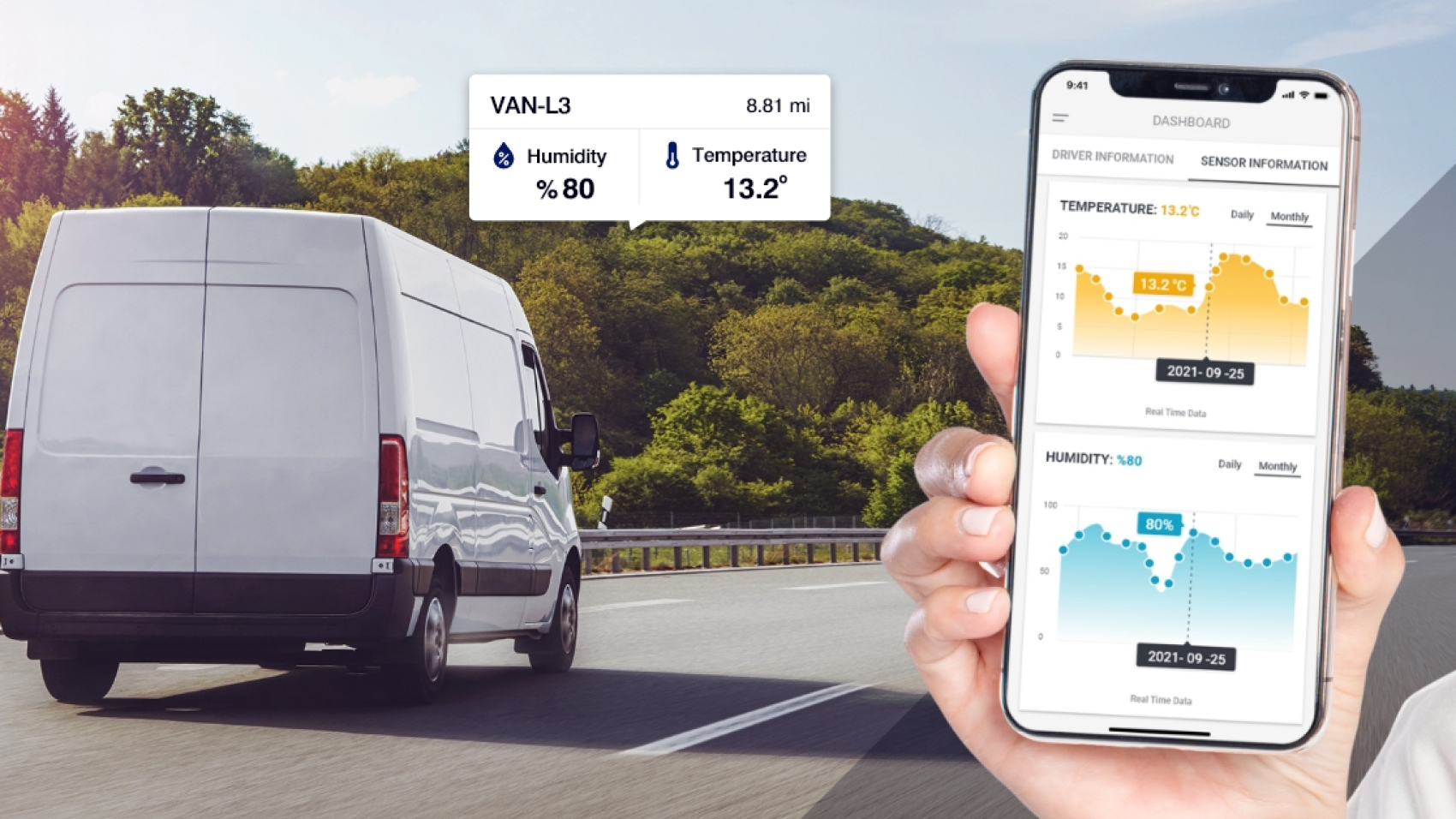Cold chain monitoring devices are a powerful tool for fleets transporting food, flowers, medicine, or other goods that must be maintained at a certain temperature throughout the shipping process. The devices provide real-time temperature data so you can avoid spoilage or waste in your supply chain. For example, temperature monitoring systems allow fleets to monitor temperatures in transit to ensure proper temperatures are maintained.
What is cold chain temperature monitoring?
Cold chain monitoring devices, also known as temperature data loggers, are wireless sensors that leverage the Internet of Things (IoT) technology to provide real-time temperature data. These temperature data logging devices are commonly placed in reefers, refrigeration units, or cold rooms to help fleet managers, cold chain managers, and customers understand the temperature of various products in real-time. These temperature monitoring devices can be particularly useful for fleets in cold chain management that ship temperature-sensitive products to their customers, including food and beverages.
How does a cold chain temperature monitoring solution work?
A cold chain temperature monitoring solution uses wireless sensors to measure and record real-time temperatures in a remote location, like a reefer, and detect temperature changes. Real-time temperature monitoring alerts can instantly warn you if the temperature has fluctuated below or above a predetermined threshold. And with remote reefer control, you can respond at the moment to mitigate any potential damage. That means if you’re hauling cold chain products, a cold chain monitoring system can provide critical temperature measurements that allow you to act before it’s too late.
Preventing product spoilage: the importance of an unbroken cold chain
Whether your team stores, distributes or delivers temperature-sensitive products, an unbroken cold chain is critical. It requires precise record-keeping and if something goes wrong, it can lead to rejected loads and unhappy customers. To maintain the highest-quality product, perishable goods must be stored at a certain temperature while in transit.
This can be challenging, however, when a change as small as one degree can lead to thousands of dollars in spoiled products. And if you’re shipping food, it’s important to meet the regulations which state perishable foods must be stored at 5°C or below. If a truck is hauling a variety of items that require different temperature requirements—like poultry and fruit—the risk of a rejected load is even greater. And even if a product is placed onto a truck at the correct temperature, environmental conditions, power outages, or even an open door can cause temperature exposure that leads to a rejected load.
Rejected loads can negatively impact a fleet in several ways:
- Cost: The carrier is often required to compensate the shipper for the value of the spoiled goods through a direct payment or insurance claim.
- Waste: The carrier is often required to dispose of spoiled goods, typically in an environmentally friendly way that can often be costly.
- Inefficiency: The truck might need to be taken to a washout facility, contributing to additional mileage and costs.
- Business: A rejected haul can strain customer relations and complicate future sales.
There are solutions available locally for real-time temperature monitoring systems to keep your cold chain intact
Many companies have started harnessing the power of IoT technology to monitor reefer truck performance and unlock preventative maintenance capabilities. There are a number of solutions available in the market that can provide monitors and cloud-based software and make it easy to oversee cold chain logistics and collect continuous temperature data for you and your end user.
Whether your fleet has box trucks or refrigerated trailers, the wireless sensors allow trucks to monitor temperature, humidity, and reefer settings in real time. You can configure automatic email alerts to detect temperature ranges, so temperatures can be quickly adjusted if necessary. Additionally, you can set a specified timeframe before a notification is shared, so something like an open door does not automatically trigger an alert.
Robust documentation is also key to proving proper cold chain management. If the recipient doesn’t believe that a product was stored at -1°C to 0°C for the entire trip, you need to be able to refute this claim and defend your driver. Likewise, you’ll need this information on hand if the relevant authorities come to check your paperwork. Because the remote sensors provide continuous real-time temperature monitoring and historical records, you’ll always have the documentation to quickly resolve any temperature validation issues.

